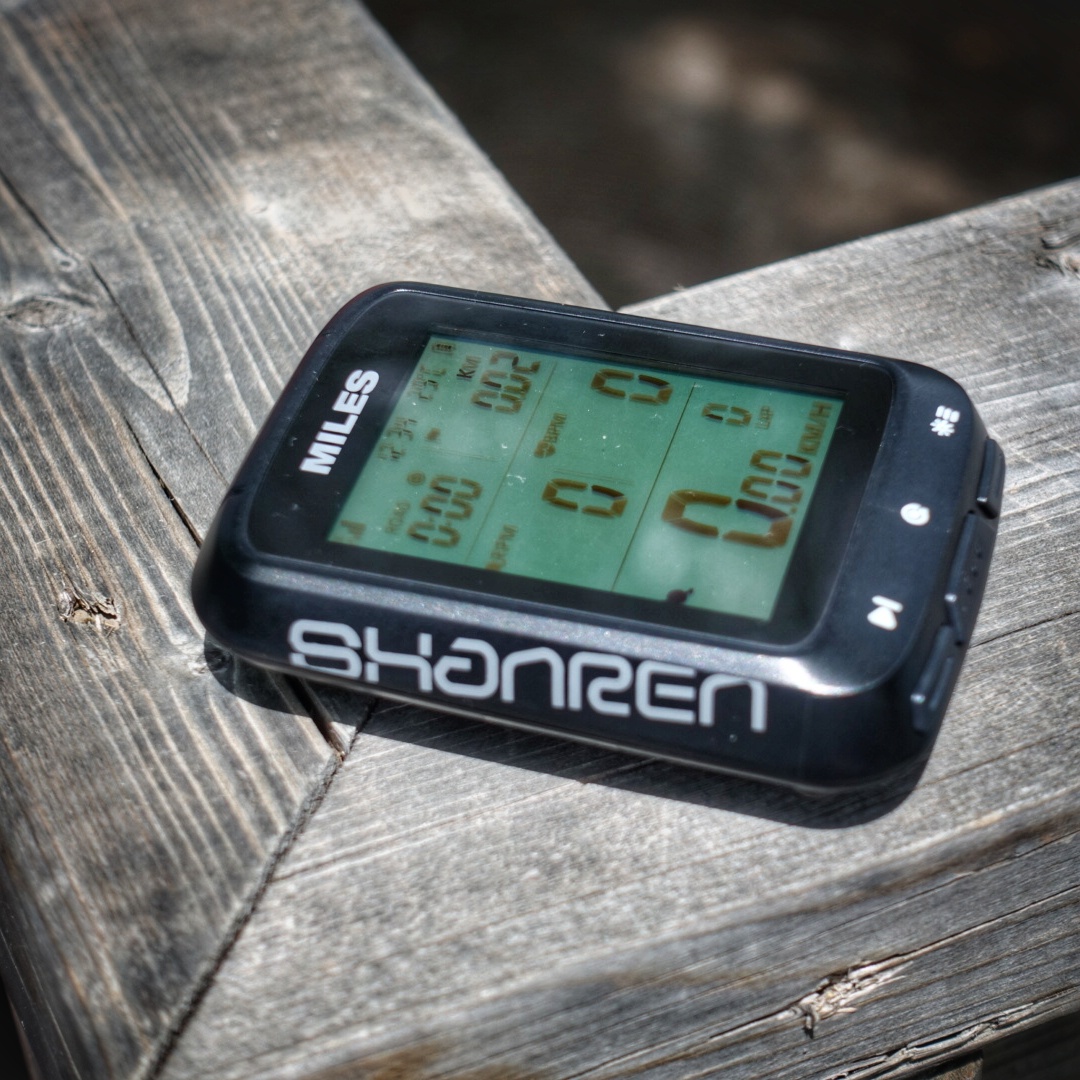One question we receive often, especially from new riders, is: which GPS bike computer should I buy?
With the many options available on the market, cyclists are spoilt for choice when it comes to ride-tracking head units with a range of capabilities. From simple speed/distance/cadence metrics to comprehensive mapping and navigation and advanced training features, connectivity options, device form factors and screen sizes.
There are some dominant names in this space of course. Garmin is a household name when it comes to cycling computers, with Edge series which has been refined over several generations. Other prominent brands include Wahoo, Polar and Bryton. Many companies that offer such devices also make a range of accessories like speed and cadence sensors, heart rate monitors and various bike mount options.
Being a newcomer to the market, this is a brand name you probably haven’t heard before: Shanren. Headquartered in the bustling metropolis of Shenzen, China, Shanren is an up-and-coming brand with big ambitions in the sports electronics market. Shanren maintains a “logistics branch in Hong Kong and design center in Silicon Valley”.
A quick look at Shanren’s product line reveals an impressive range of more than ten products, one of the latest of which is the product we are currently testing: their new Miles GPS bike computer.
The Miles is a simple, no-frills GPS computer. That doesn’t mean it is short on features. At its attractive price point, it offers a very decent feature list, including:
• Bluetooth and ANT+ compatibility
• Wireless data transfer (via ShanrenSport app)
• High-precision GPS chipset
• Claimed 25 hours of battery life in GPS mode
• Strava integration
Form factor, size and weight:
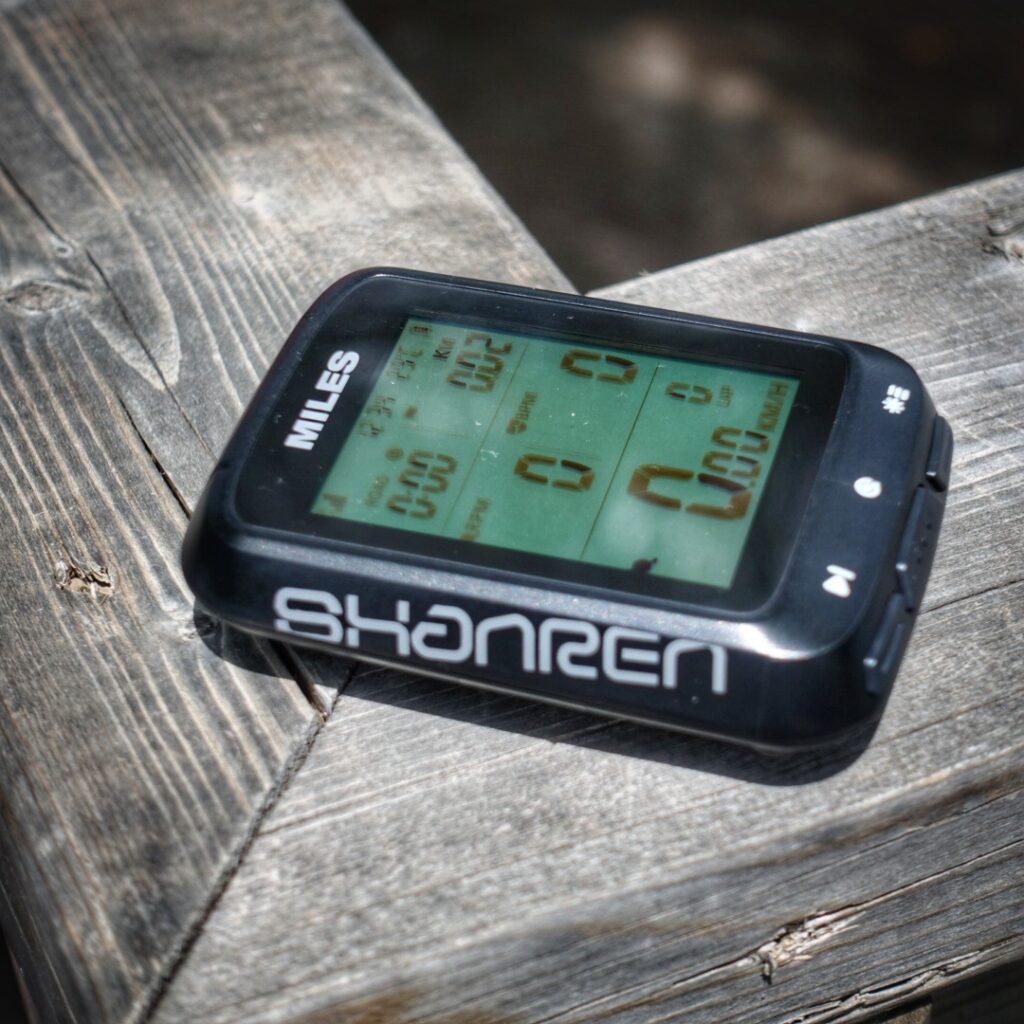
The first thing that I thought when I took the Miles out of the box was that this size of bike computer is ideal for mountain biking. Expensive and feature-rich bike computers are great, but their often-large size for the sake of offering a bigger display and more features make them more prone to damage in the event of a crash. Smaller GPS computers are more suitable for off-road riding due to their lower profile, making them less susceptible to damage.
The dimensions are approximately 73x52x20mm, and it weighs approximately 65g. This makes the Miles slightly larger and slightly heavier than its most direct competitor we have used, the Garmin Edge 130. The display on the Miles is slightly larger than the Edge 130 (2.1in vs 1.8in).
Here is one thing the Miles has as an advantage over the Edge 130: it is IP67 rated, which means that it is fully water and dustproof. IP67-rated devices can also be submerged in water for 30 minutes at a depth of 1-meter. In comparison, the Garmin Edge 130 is only IPX7 rated, which means that the manufacturer has not tested it against resistance to dust. In off-road use, especially in dry climates, dust protection is critical.
Initial setup:
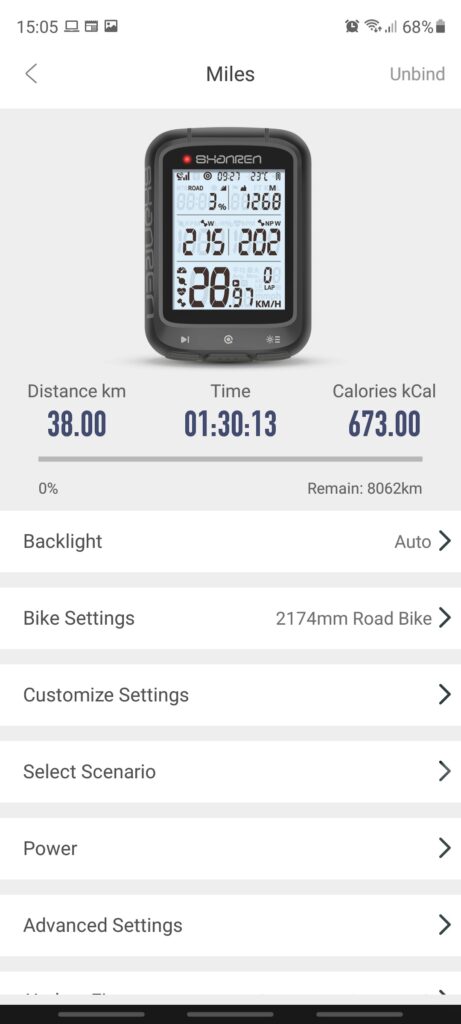
Out of the box the Miles was very intuitive to set-up for the first ride. The ShanrenSport app is available in IOS and Android versions (we’ve only used the Android one). The Miles pairs to your phone within the app, and from there it appears in your Shanren device list. Selecting it brings up a menu that includes settings from everything from satellite mode (there is GPS, GPS+Glonass and GPS+ BeiDou, which is a Chinese satellite navigation system) backlight intensity (which you can see change in real-time on the device by using a slider control on the app) to Strava account authorization. It took all of 5 minutes to pair the Miles with my phone and enter basic settings and for what it is intended the offer, the app works well enough. Don’t expect all the bells and whistles similar to things like Garmin Connect or Polar Flow, but Shanren isn’t trying to compete in this league…yet.
On the bike:
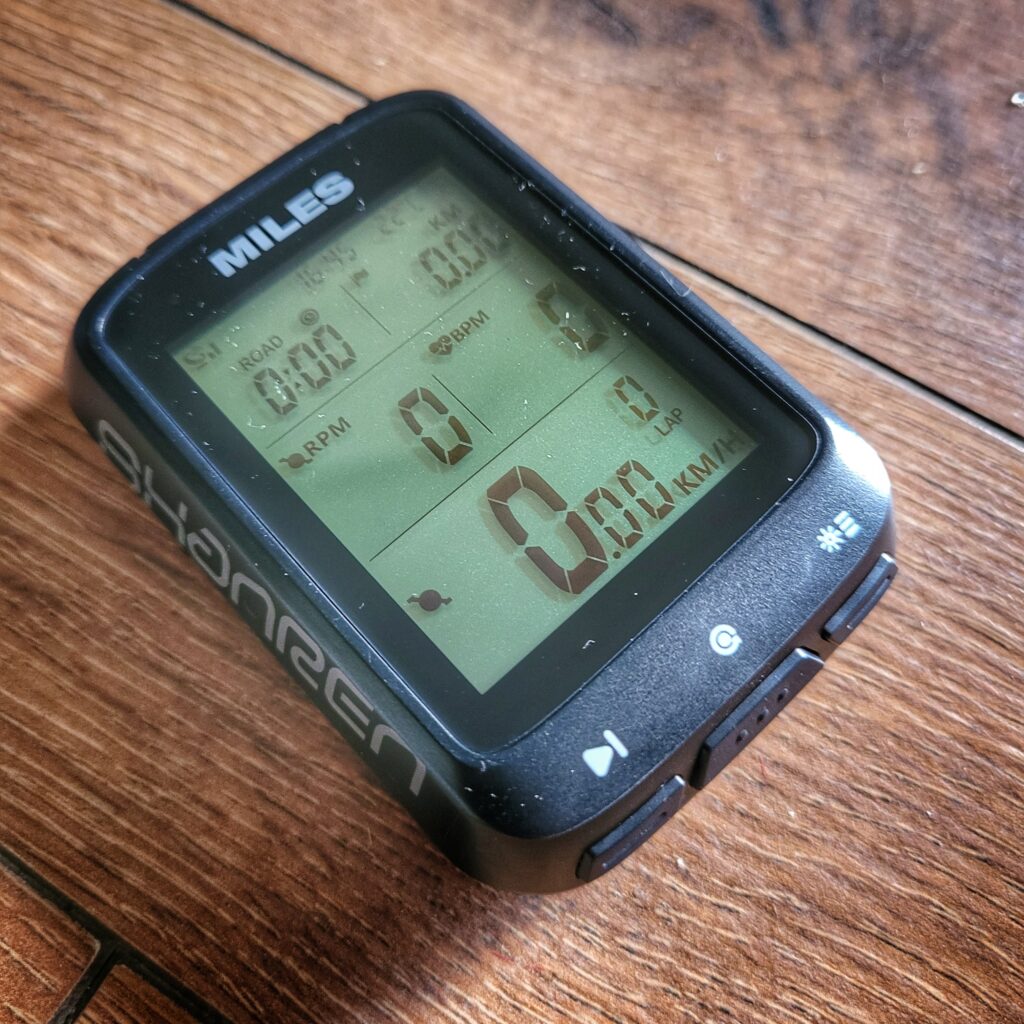
The Shanren Miles is compatible with Garmin-style quarter-turn mounts and it came with a simple round quarter-turn mount included. Shanren also makes another – surprisingly high quality – out front style mount that is reversible for mounting on either side of the stem. I say the mount surprised me because at the price point of the nicer mount (about half of what larger brands charge for their similar offerings), I didn’t expect to see such a solid, well-made mount that I’d be confident in using on rough terrain included in the box. Kudos to Shanren on this one!
The user interface of the Miles unit is fairly easy to get acquainted with. There are three physical buttons on the bottom side of the device: a power button in the center, start/stop button on the left and light/settings button on the right. No touchscreen here, but at this price point we certainly cannot expect one.
The display is simple yet easy to read at a glance on the bike. You can customize the metrics on the unit itself or using the ShanrenSport app (which some big brands still won’t make available, I am looking at you Garmin!). The backlight brightness can be customized and maximum brightness is more than adequate in low light settings. You can also let the unit handle backlight intensity by setting it to “auto”.
GPS tracking accuracy:
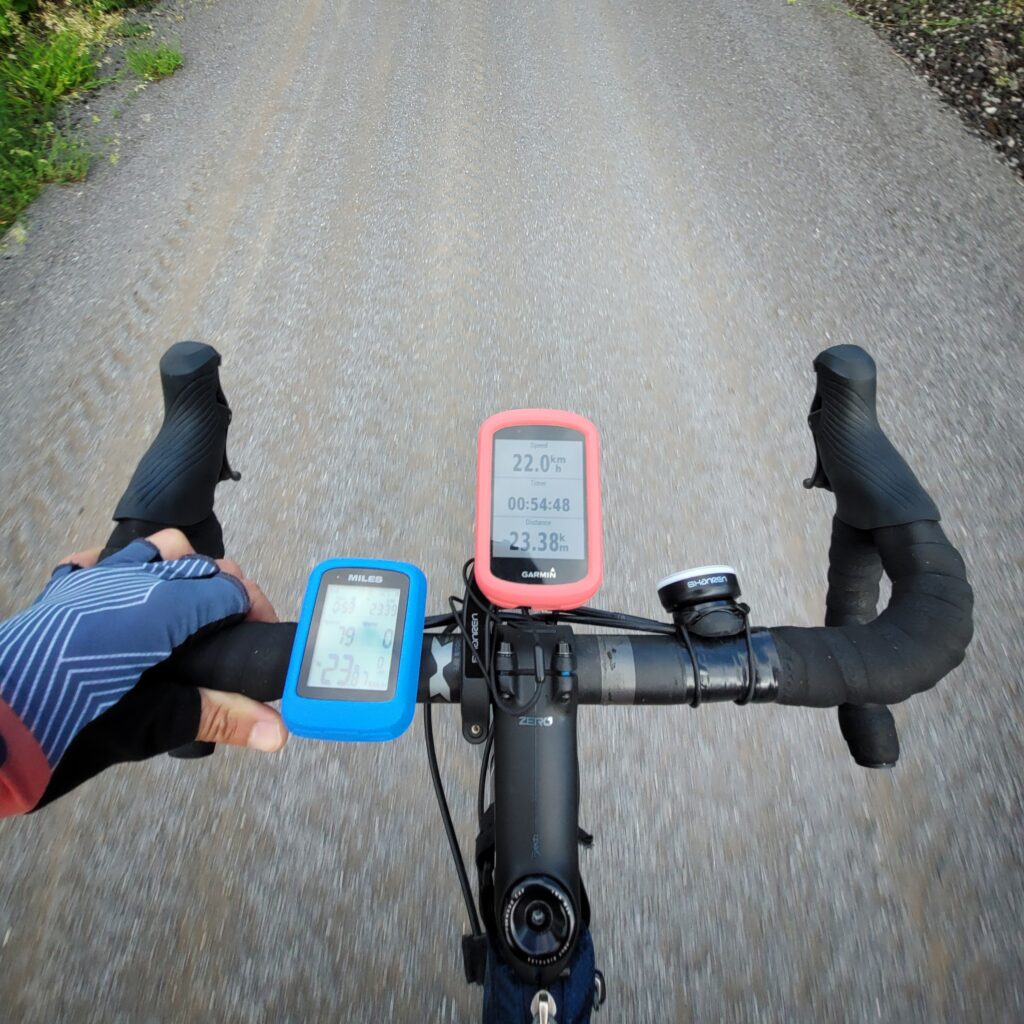
I took the Miles on a 40km ride on mixed terrain mounted on the handlebar along with my Garmin Edge 830 and my Polar Grit X, all in GPS+Glonass mode. I had a look at the GPS files after the ride and the Shanren tracked surprisingly close to the Garmin. No crazy GPS errors. The GPS signal remained locked on satellites for the duration of the ride. For a unit that costs less than a quarter of the price of the other two devices I had running simultaneously with it.
Now, a sample size of one ride is certainly not adequate grounds to make conclusive claims about anything, but by the evidence the Miles presented so far, things look very promising.
Wireless sync and Strava upload:
This was also a fairly straightforward experience. After I was done with my ride, I opened the ShanrenSport app (to which I had authorized my Strava account previously), opened the ride log and selected “upload to Strava”. Within seconds, the ride log was synced to my Strava account. This works well enough, but it would be great if Shanren would add an auto-sync feature that wouldn’t require opening the app after every ride, but that’s only a minor inconvenience. Edit July 14th 2021: Shanren actually justr eleased Strava auto update in the latest release of the Shanren Sport app. You can also manually download the FIT file if you wish to upload to other apps or software.
Other stuff:
• One of Shanren’s selling points with the Miles is that it does “power estimation” based on preset metrics without being connected to a power meter. We have not tested that yet but it seems like a potentially useful metric. We will run the unit alongside a calibrated power meter and update this review.
• Shanren makes some colorful silicone protective cases for the Miles. We opted for the blue one and it’s worth it for additional protection.
• One thing we wish the Miles had for extra security is a lanyard mount. The unit doesn’t have an easy way to fix a lanyard to prevent the device from getting bounced far off the bike in the (rare) event of it coming off its mount. That being said, the connection between the Miles and the included mount seemed very positive and secure.
• Shanren makes a number of sensors, including their speed and cadence sensors (pictured). The sensors are BLE/ANT+ compatible and we tested them not only with the Miles, but also with units from other brands. They work as well as the ones you get from big-name manufacturers.
• Shanren also makes some very innovative bike lights which the Miles can be used to control. You can see one of those lights, the Raz Pro, mounted to my handlebar in the picture above. We have a couple of units under testing and will update this review with more information at a later date.
Summary:
Shanren touts the Miles as “Your first GPS bike computer”, and that’s actually a great way to describe this unit. The Miles offers many features that make it attractive to beginner cyclists, but especially mountain bikers, including:
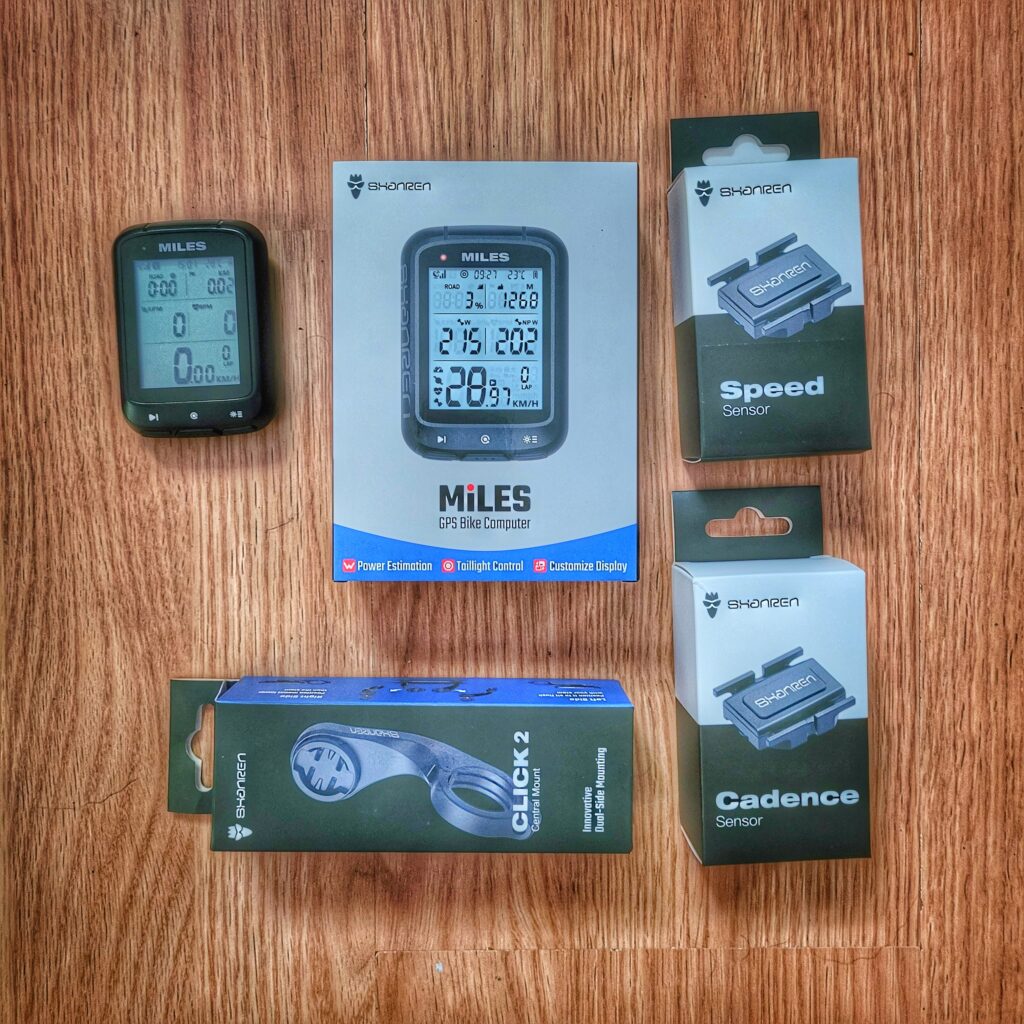
• Well-built button-based interface with IP67 waterproof/dustproof rating
• Lightweight and low-profile footprint
• Easy to read monochrome display
• Universal and cross-compatible quarter-turn mounts
• A host of high quality and affordable accessories, like speed and cadence sensors, protective cases and handlebar mounts.
• Accurate GPS chipset and good GPS tracking
If you are on the hunt for a simple yet reliable GPS unit, we can’t really find much fault with the Shanren Miles. It offers a high-quality construction, simple interface and a solid set of features to get you started in the world of GPS ride tracking. If you don’t need navigation or advanced training features, we suggest you strongly consider the Miles on your cycling GPS computer shortlist.
